How To Clean Windows 10 C Drive

How do I free up space on my C drive in Windows 10? I don't know what is taking so much space on my C drive and can't seem to decide what to delete or what to keep?
If you are also a Windows user, then you must have doubted this as well. While Windows is undoubtedly one of the most popular operating systems – it has a major drawback. A lot of times, it doesn't clean its mess and residual content that piles up a lot of space on the disk. As a result, users look for different ways to clean the C drive (the Windows drive). While doing so, just make sure that you don't delete any important file. To teach you how to clean C drive safely and effectively, we have come up with this in-depth tutorial.

- Part 1: What Takes up C Drive Space
- Part 2: How to Increase C Drive Space?
- Part 3: Bonus: How to Get Data off an Old Broken Hard Drive?
What Takes up C Drive Space
Before we start, it is important to note that we have referred the "C" drive as the partition where Windows is installed. Whilethe drive letter might vary, in most cases, Windows is installed on the "C" partition. Apart from the usual content, it can consist of the following things:
- System files: This is the most important part of the C drive as it consists of the vital firmware component. Apart from that, it also stores important data related to your computer as well.
- App data: You might have installed tons of programs and applications on your system's C drive. The more the apps, the more space they would consume.
- Junk: When we delete something, it is moved to the Recycle Bin instead. The C drive is where all the data in Recycle Bin is stored.
- Cache, temp, and log files: While running, your system would store all kinds of temporary, cache, and log files to provide a faster experience. All of this would be stored in the C drive.
- User data and other content: There are all kinds of downloaded files, important documents, photos, synced cloud data, and other content present in the C drive as well.
If you want to know what kind of data is stored in your system's C drive, then just go to its Settings > System > Storage. This will list an in-depth bifurcation of what is taking how much space on C drive.
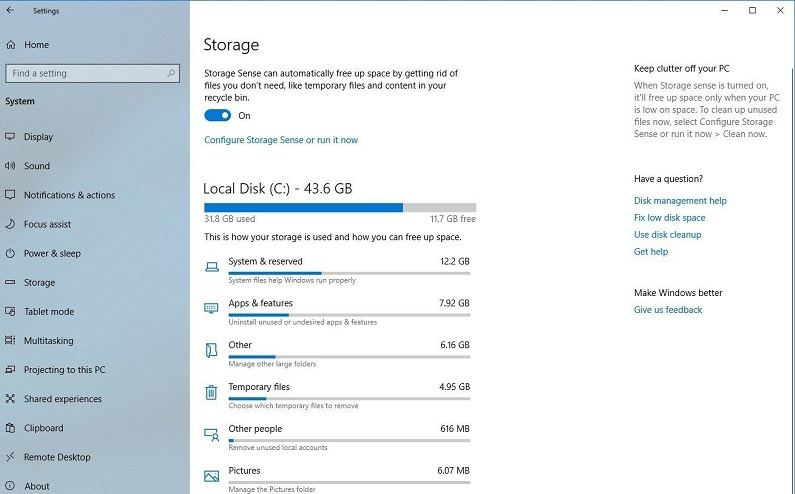
How to Increase C Drive Space?
Without much ado, let's dive into the details and learn how to increase C drive space in Windows 10 and 7. Although most of these suggestions can be implemented, we have started with the ones that are recommended by the experts.
1 Uninstall Junk Applications
If you have been using your Windows system for a while now, then it must have accumulated a lot of unwanted applications. To start with, you can review all the installed applications on your system and get rid of all the "junk" programs that you no longer need.
1. Uninstalling apps on Windows 10/8/7 is pretty easy. To start with, you can just visit Windows' Settings from its Start menu. Once it is launched, visit its "System" settings.

2. As the System Settings would be loaded on the screen, visit the "Apps & features" option from the sidebar. This will list all the applications that are currently installed on your system.
3. Select the application you wish to remove and double-click its icon to get more options. Click on the "Uninstall" button from here.
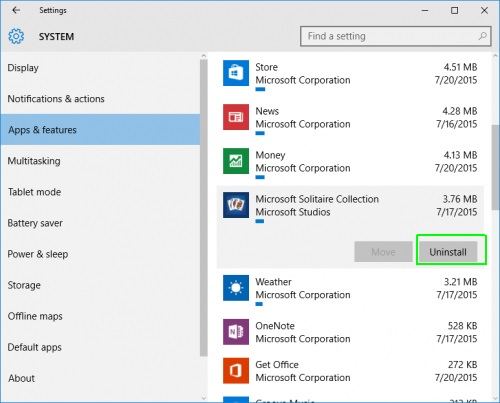
4. If you get a confirmation prompt, click on the "Uninstall" button again and enter the administrator details of the system. Wait for a while as the application would be deleted from your computer.
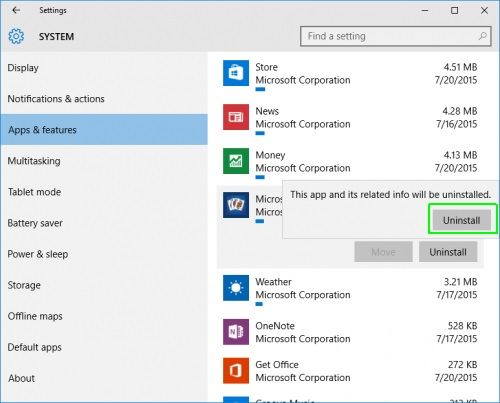
While the process is the same to uninstall apps in Windows, the overall interface might vary among different versions. Also, consider restarting your system after uninstalling apps to reset its app data and cache content.
2 Delete Junk Files by Storage Sense
If you have a Windows 10 #1903 (released on May 10, 2019) or a newer version, then you can also take the assistance of Storage Sense. It is an inbuilt Windows Utility tool that can help you free up space on C drive automatically. When turned on, it will optimize space on C drive by deleting the unwanted temp files and managing the OneDrive data. Here's how to increase the C drive space with the Storage Sense settings.
1. From the start menu, go to Windows' Settings and navigate to System > Storage. Here, you can turn on the "Storage Sense" feature.
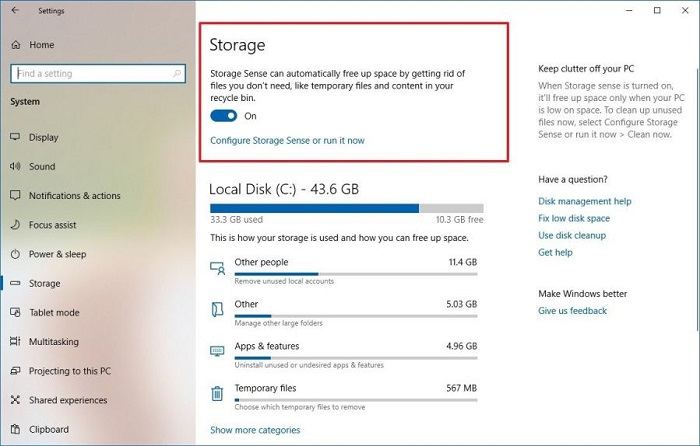
2. To further customize things, you can click on the "Change how we free up space automatically" button adjacent to it.
3. This will provide a list of various options that you can select to clear C drive. For instance, you can turn on the automatic deletion of temporary files, remove data from Recycle Bin, and make cloud content available on the drive. After making the appropriate selections, click on the "Clean Now" button.
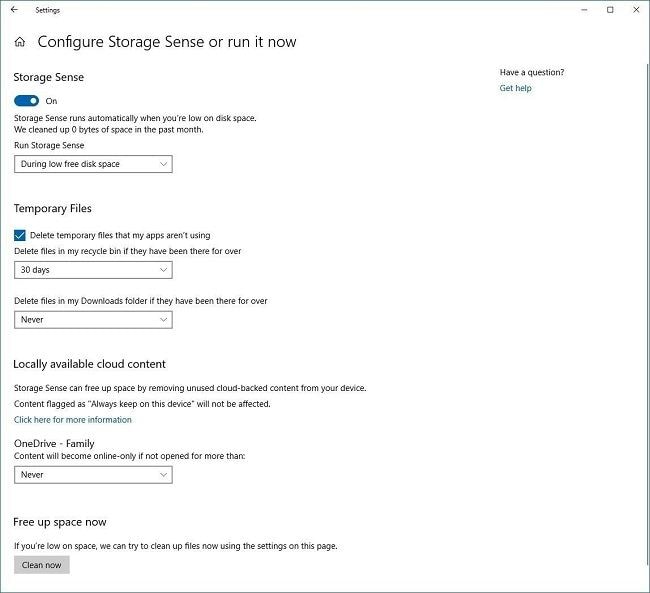
3 Delete Temp Files by Disk Cleanup
While working on your Windows system for a while, chances are that you might end up accumulating a lot of temporary data. Although temp files are used to store certain vital details and make the overall experience smoother, they can also consume a lot of space. The best way to clear the C drive is by cleaning its temporary data at regular intervals by using the Disk Cleanup Utility.
1. There are multiple ways to access the Disk Cleanup app. One of the easiest ways is to look for it from the start menu.
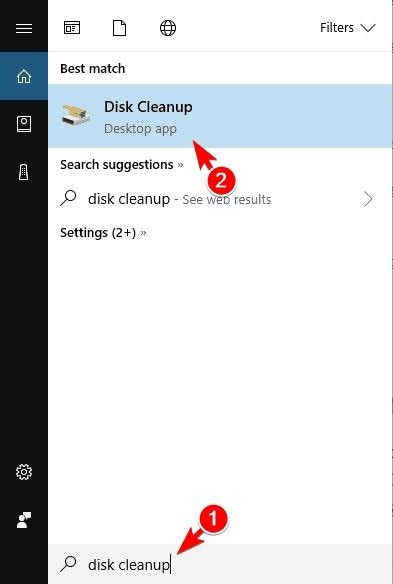
2. Once the Disk Cleanup application is launched, you need to select the drive you wish to clean. In this case, it will be the C drive.
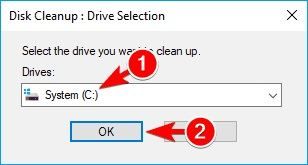
3. Wait for a while as the application would calculate the data that it can clean from the drive.
4. In the end, it will display a dedicated prompt with details of the data you can delete. From here, select the "Temporary Files" option and click on the "Ok" button to clean C drive.

4 Empty Recycle Bin
If you are a regular Windows user, then you must be familiar with the Recycle Bin. Ideally, when we delete something from the system, it is moved to the Recycle Bin, where it is stored temporarily. Therefore, you can check the Recycle Bin storage and clear it to free up space on C drive. While doing so, just make sure that you don't get rid of any important file.
1. There are different ways to empty Recycle Bin. For instance, you can just select its icon from the desktop, right-click, and choose the "Empty Recycle Bin" option.

2. Alternatively, if you wish to view the data present in Recycle Bin first, then double-click to open it. From the toolbar, you can also click on the "Empty Recycle Bin" button.
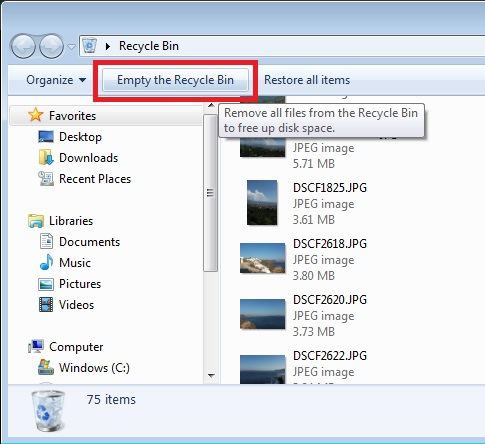
3. Confirm your choice by clicking on the "Yes" button when you get the prompt. In a few seconds, all the stored content from Recycle Bin would be deleted.
5 Move Data to Another Hard Drive
If you are not sure of what you can delete from your system, then this would be an ideal option. Simply get another hard drive (like an external hard disk) and move your important files to it instead. In this way, you can keep your files to another location separately without losing them from your system.
1. Simply connect the second hard disk or an external hard drive to your system and wait for it to be detected.
2. Now, go to My Computer > C Drive and browse the data you wish to get rid of. Cut it from here and paste it on the hard drive.
3. If you want, you can also right-click the file/folder you wish to move, go to the "Send to" option, and select the connected hard disk as a source. This will directly send this file/folder to your hard drive.
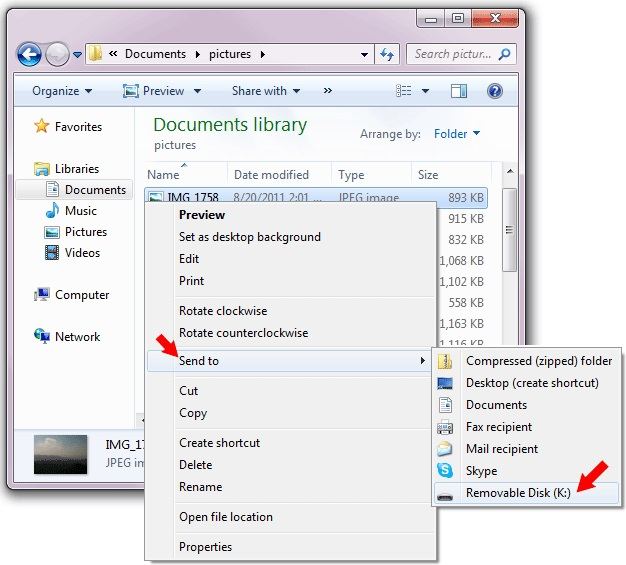
6 Disable Hibernation in Windows 10/7
A lot of Windows users put their system on hibernation to save power and time. Though, it can backfire – since the feature creates a dedicated system file (hiberfil.sys). During the hibernation, the file would store all the vital details of the system so that you can start from where you left off before. Ideally, it is not recommended to turn off hibernation, if you are used to it. Nevertheless, if you wish to learn how to clean C drive, then you can give this option a try.
1. To turn off the hibernation feature, you need to launch the Command Prompt first. Go to the Start menu to do it. Just make sure that you launch Command Prompt as an administrator.
2. After when the Command Prompt is launched, simply type and enter the "powercfg –h OFF" command.
3. Alternatively, you can also type the "powercfg /hibernate off" command and press enter. This will automatically disable the hibernation mode on your system.
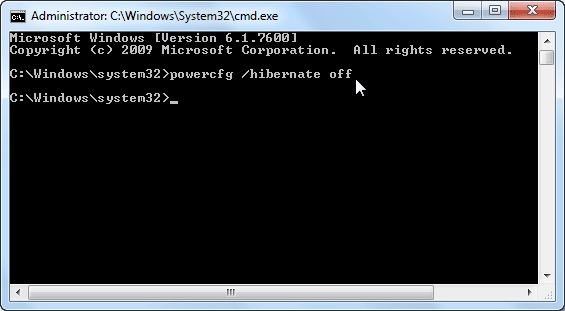
7 Compress Installation Data
This is another method that mostly the experts use to clean C drive on Windows 10, 8, or 7. In this, we will take the assistance of Windows' native feature to compress the OS installation files and other kinds of data. Though, if you wish your system to run in an optimum manner, then you can avoid this suggestion.
1. To start with, simply launch Windows Explorer > My Computer and select your C drive.
2. Right-click and visit its Properties. Under the General tab, you can see an option for "Compress this drive to save disk space". Enable this and implement the changes to compress the drive.
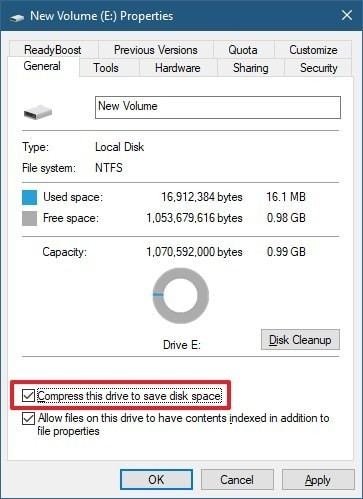
3. Besides that, you can also compress the installation files (OS updates) as well. To do this, click on the "Disk Cleanup" button on the General tab here.
4. As the Disk Cleanup window would be initialized and launched, you can view the "Compress your OS drive" option. Select it and click on the "Ok" button to implement it.
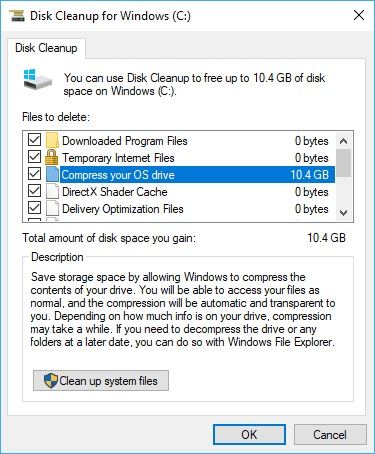
8 Disable System Restore
In the latest Windows systems (like 7, 8, or 10), there is an option to restore the system files after an unwanted crash. While most of the experts would recommend keeping the feature enabled, it can end up taking a lot of space on your drive. Therefore, you can consider disabling this only if the C drive is running short on free space. To know how to increase C drive space by disable the System Restore option, follow these steps:
1. Firstly, launch Control Panel from the Start menu on your Windows and go to its System & Security > System settings. From the sidebar, launch the "System Protection" feature.
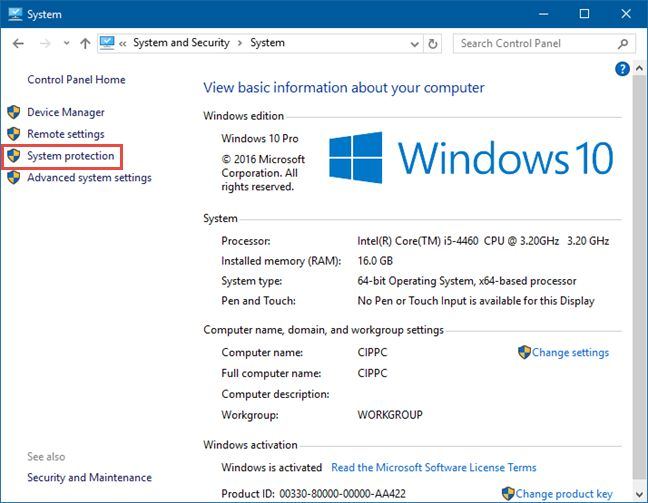
2. As the System Properties window will open, go to the "System Protection" tab and click on the "System Restore" button.
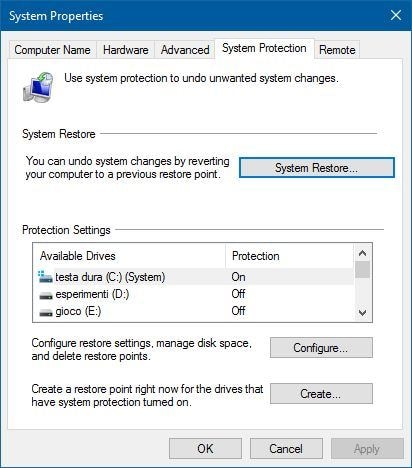
3. From here, you can just disable this feature. Apart from that, you can also adjust the space that is allocated to this feature on the C drive.
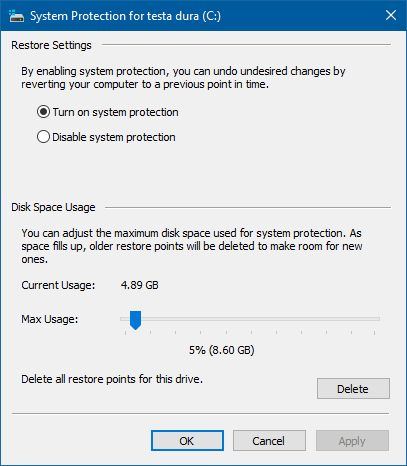
9 Compress System Files
We have already listed how Windows can compress certain files to free up space on C drive. Though, just like compressing the installation files, it is not recommended to follow this suggestion as it might affect the overall processing of your system. Ideally, you should consider it as a last resort when you have to clear C drive data immediately.
1. Simply select the C drive from My Computer and go to its Properties by right-clicking it. From here, you can visit the Disk Cleanup feature.
2. Wait for a while as the disk cleanup options would be loaded. From the list, select the "System Compression" feature and click on the "Ok" button. This will automatically compress all the system files on your Windows.
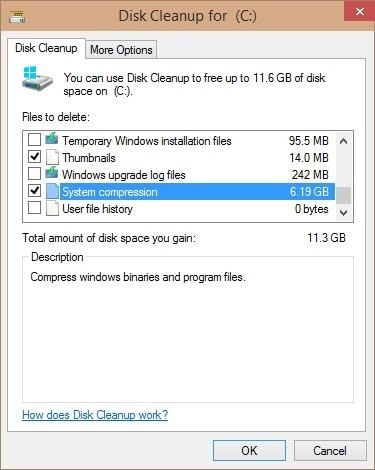
10 Extend the C Drive Storage
If nothing else would seem to work, then you can also extend the storage of the C drive as well. Beforehand, just make sure that there is enough available space on the disk. If not, you can format a partition and have available space that can be merged to the C drive. If your C drive is running out of space, then follow these steps:
1. To begin with, launch the Disk Management application on Windows. You can find it from the Start menu.
2. As the Disk Management window will open, you can view the storage allocated to each partition and the available free space as well.
3. Right-click the C drive option from here and go to the "Extend Volume" feature.
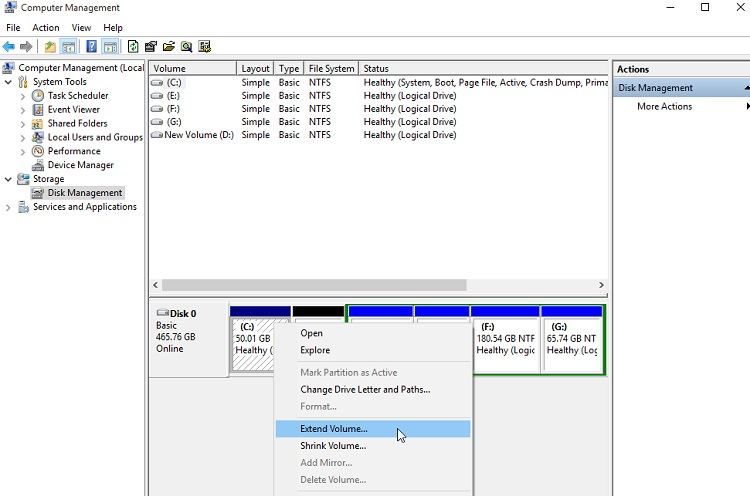
4. This will launch a dedicated Extend Volume Wizard that you can run by following a simple click-through process. From here, you can select the available space and add it to the C drive.
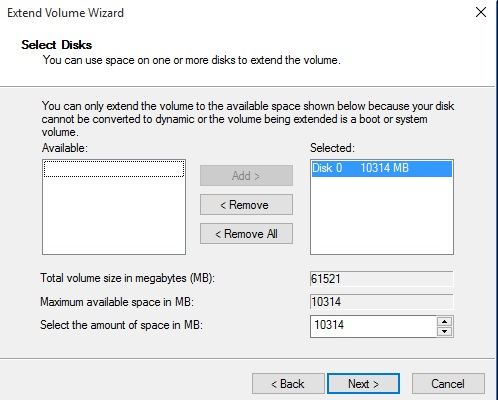
Please note that if the free space is not available, then you can create it from the Disk Management application. You can do this by defragmenting the disk or removing the free space from any other partition.
Bonus: How to Get Data off an Old Broken Hard Drive?
If you have an old or broken hard drive, then it might get tough to extract data from it. In case if you can't simply copy your files from it the usual way, then try a dedicated recovery solution instead.
Tip 1: Recover Lost Data from C Drive
WondershareRecoverit Data Recovery is a professional tool that is recommended by experts to extract the lost content from a hard drive. Therefore, if you have lost or deleted your files from the C drive, then consider using Recoverit immediately. The sooner you run it, the better results you are expected to get.
What is special about Recoverit is that it has one of the highest data recovery success rates (96%) in the industry. Also, it features an extremely simple user interface, which does not require any technical background. You can just download it on your Windows PC for free by visiting its website and follow these steps.
Step 1 Select a source to scan
Firstly, launch the Recoverit Data Recovery application on your system, and from its home, select a location to scan. If you want, you can select the entire C drive partition or browse to a specific folder to extract lost data from it.

Step 2 Scan the selected source
Once the target location is selected, click on the "Start" button and wait for a few minutes while Recoverit would scan it. You can view the progress of the scan on the interface and even pause it whenever you want. To get the maximum output, let the application run the complete scan.

Step 3 Restore your data safely
That's it! After when the scan is over, all the extracted content will be listed under different file types and folders. You can switch between them from the sidebar and get a preview of your photos, videos, documents, etc. as well. Now, just pick the files you wish to get back and click on the "Recover" button. Make sure you get off this data to a trusted location in the end.

Tip 2: Check the C Drive Storage Regularly
Apart from that, you should also make a habit of checking the storage of C drive regularly. There are plenty of ways to do this. You can just go to your PC's Settings > System > Storage to view it. Also, you can go to My Computer and right-click the C drive icon. Go to its Properties > General tab to know how much space is left on the drive presently. As soon as you think the free space is limited, take preventive measures to clean up C drive.

This brings up to the conclusion of this in-depth guide on how to clean C drive in Windows 7 and 10. To help you, we have listed not one, but 10 different options to clear space on C drive. Not just that – the guide also lists a smart and fast solution to recover data from your computer as well. The ball is in your court now! Go ahead and try some of these suggestions to free up space on C drive. If you also have some tips on how to increase C drive space, then why not share them with us in the comments below.
FAQs
Can I expand my C drive?
If your volume C is part of a larger partitioned device, it is possible to expand the size of the volume using unallocated space on the device. However, this process is not always straightforward as the order of the partitions is important. and can make this process impossible without the help of some specialized software.
Why is there no option to extend C drive?
The "Extend Volume" option in Disk Management only allows you to extend volumes using the unallocated space next to it. This means that you cannot extend the volume if there is a joint partition that is not unallocated. For example: if the device has a "D:" partition, you must delete the D: partition to extend the C: partition, and later you could reassign a new "D:" partition.
What can I remove from my C drive?
If you are looking for a way to free up space on your C device, you can use Windows tools to free up space. These tools will delete temporary files, the contents of the recycle bin and will suggest you delete/uninstall the programs that you do not use. You can access these tools by typing "Storage settings" and "Delete temporary files" from the Windows menu.
Can I move a healthy recovery partition?
Recovery partitions are protected for security reasons and due to the GUID Partition Table (GPT) structure, these partitions have unique features that are vitally important for repair processes. However, if you wish, you can delete this volume using the "DISKPART" tool from "Command Prompt" and then use the "unallocated" space to extend volume C.
What happens if I delete the recovery partition?
You will not notice any change in daily use. This partition mainly stores copies of files that are used to repair the operating system boot in case of data loss or corruption. If you back up your personal information by other means, and the idea of reinstalling Windows doesn't bother you, this may not be a major problem for you.
How To Clean Windows 10 C Drive
Source: https://recoverit.wondershare.com/harddrive-tips/clean-c-drive.html
Posted by: duvalldifors.blogspot.com

0 Response to "How To Clean Windows 10 C Drive"
Post a Comment